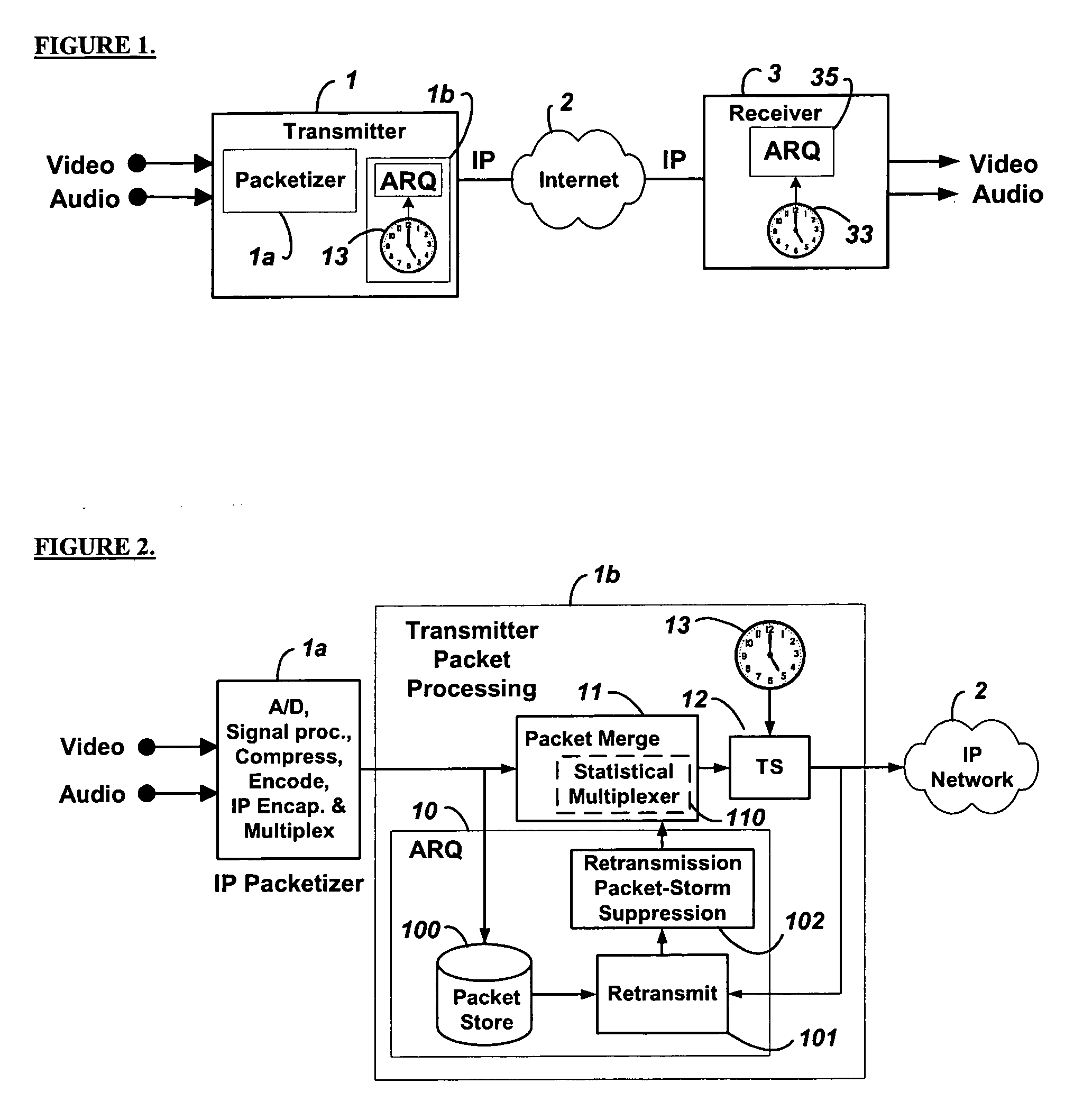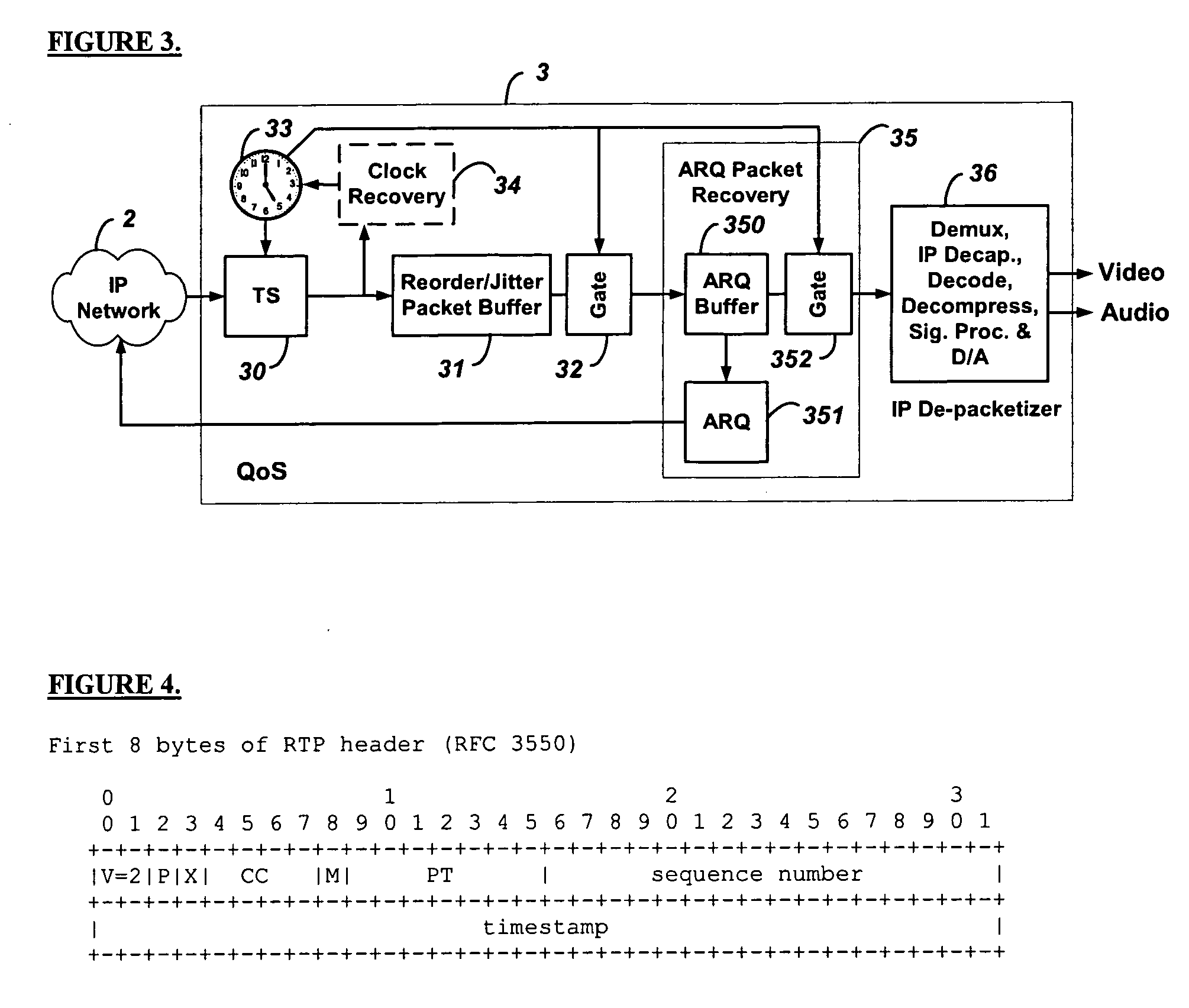Low-latency automatic repeat request packet recovery mechanism for media streams
a technology of automatic repeat request and packet recovery mechanism, which is applied in the field of low-latency automatic repeat request packet recovery mechanism for media streams, can solve the problems of packet loss, compounding potential router queue overflow, and adding an unpredictable amount of jitter and packet loss to the transport of video and audio packet streams, so as to minimize the added jitter, low-latency transport, and minimize the effect of latency
- Summary
- Abstract
- Description
- Claims
- Application Information
AI Technical Summary
Benefits of technology
Problems solved by technology
Method used
Image
Examples
Embodiment Construction
[0018] Embodiments of the invention apply a modification of a selective repeat, continuous ARQ error correction mechanism to packet streams containing audio, video, and other real-time signals, thereby enabling their robust, low-latency transport over packet-switched networks. In particular, embodiments of the invention apply time-based constraints in order to minimize and bound latency and jitter added by ARQ packet recovery. Some embodiments may tighten bounds on ARQ latency by synchronizing clocks between a transmitting node and a receiving node to more precisely calibrate the timing constraints. However, embodiments not requiring minimal latency and precise clock synchronization may instead simply rely on free-running local time references.
[0019] The enforcement of timing constraints, such as those on packet delivery timing, request timing, stale-dating, and other aspects of ARQ mechanisms enable embodiments of the invention to transport both constant bit rate streams (CBR) as ...
PUM
 Login to View More
Login to View More Abstract
Description
Claims
Application Information
 Login to View More
Login to View More - R&D
- Intellectual Property
- Life Sciences
- Materials
- Tech Scout
- Unparalleled Data Quality
- Higher Quality Content
- 60% Fewer Hallucinations
Browse by: Latest US Patents, China's latest patents, Technical Efficacy Thesaurus, Application Domain, Technology Topic, Popular Technical Reports.
© 2025 PatSnap. All rights reserved.Legal|Privacy policy|Modern Slavery Act Transparency Statement|Sitemap|About US| Contact US: help@patsnap.com



